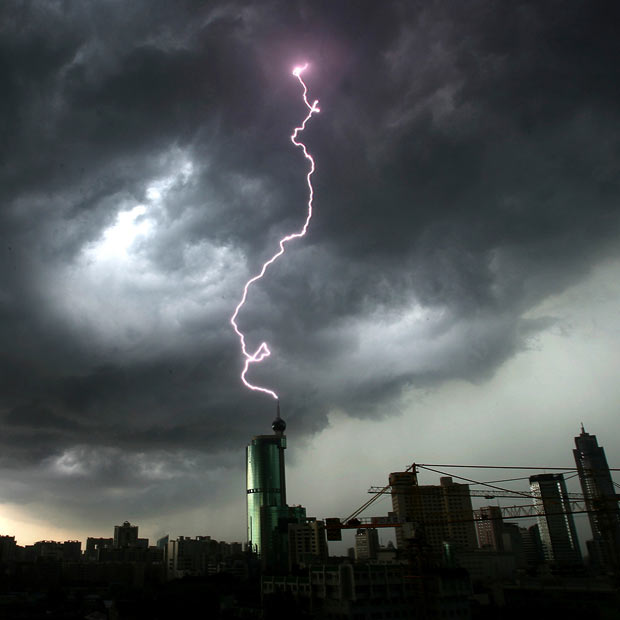It’s fascinating how a seemingly well-understood phenomenon, such as lightning, can still yield enormous surprises. Researchers have found that visible flashes of lightning can also be accompanied by non-visible, and more harmful, radiation such as x- and gamma-rays.
From the Washington Post:
A lightning bolt is one of nature’s most over-the-top phenomena, rarely failing to elicit at least a ping of awe no matter how many times a person has witnessed one. With his iconic kite-and-key experiments in the mid-18th century, Benjamin Franklin showed that lightning is an electrical phenomenon, and since then the general view has been that lightning bolts are big honking sparks no different in kind from the little ones generated by walking in socks across a carpeted room.
But scientists recently discovered something mind-bending about lightning: Sometimes its flashes are invisible, just sudden pulses of unexpectedly powerful radiation. It’s what Joseph Dwyer, a lightning researcher at the Florida Institute of Technology, has termed dark lightning.
Unknown to Franklin but now clear to a growing roster of lightning researchers and astronomers is that along with bright thunderbolts, thunderstorms unleash sprays of X-rays and even intense bursts of gamma rays, a form of radiation normally associated with such cosmic spectacles as collapsing stars. The radiation in these invisible blasts can carry a million times as much energy as the radiation in visible lightning, but that energy dissipates quickly in all directions rather than remaining in a stiletto-like lightning bolt.
Dark lightning appears sometimes to compete with normal lightning as a way for thunderstorms to vent the electrical energy that gets pent up inside their roiling interiors, Dwyer says. Unlike with regular lightning, though, people struck by dark lightning, most likely while flying in an airplane, would not get hurt. But according to Dwyer’s calculations, they might receive in an instant the maximum safe lifetime dose of ionizing radiation — the kind that wreaks the most havoc on the human body.
The only way to determine whether an airplane had been struck by dark lightning, Dwyer says, “would be to use a radiation detector. Right in the middle of [a flash], a very brief bluish-purple glow around the plane might be perceptible. Inside an aircraft, a passenger would probably not be able to feel or hear much of anything, but the radiation dose could be significant.”
However, because there’s only about one dark lightning occurrence for every thousand visible flashes and because pilots take great pains to avoid thunderstorms, Dwyer says, the risk of injury is quite limited. No one knows for sure if anyone has ever been hit by dark lightning.
About 25 million visible thunderbolts hit the United States every year, killing about 30 people and many farm animals, says John Jensenius, a lightning safety specialist with the National Weather Service in Gray, Maine. Worldwide, thunderstorms produce about a billion or so lightning bolts annually.
Read the entire article after the jump.
Image: Lightning in Foshan, China. Courtesy of Telegraph.

